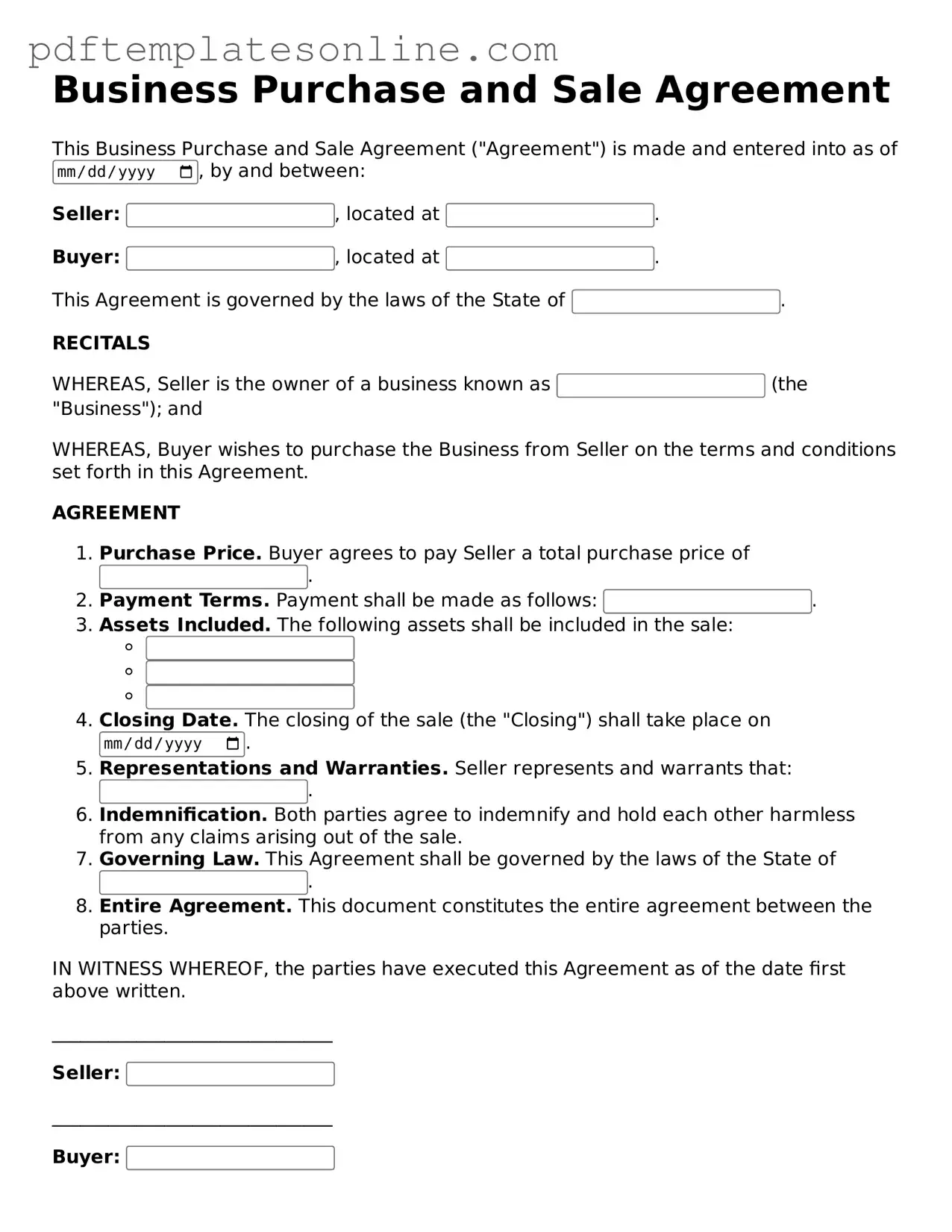Filling out a Business Purchase and Sale Agreement can be a daunting task. Mistakes can lead to misunderstandings or even legal issues down the line. One common mistake is not providing complete information. Buyers and sellers must ensure that all details, such as names, addresses, and business descriptions, are accurate and thorough. Missing even a small piece of information can create confusion and complications.
Another frequent error is failing to clearly define the terms of the sale. This includes the purchase price, payment terms, and any contingencies. Without clear definitions, parties may have different interpretations, leading to disputes. It’s essential to be specific about what is included in the sale, such as inventory, equipment, and intellectual property.
People often overlook the importance of including warranties and representations. These statements assure the buyer that certain conditions about the business are true. If these are missing, the buyer may find themselves in a difficult situation if issues arise after the sale. It’s wise to address these aspects thoroughly to protect both parties.
Not considering the legal implications of the agreement is another significant mistake. While it may seem straightforward, the agreement is a legally binding document. Individuals should seek legal advice to ensure compliance with local laws and regulations. This can prevent future complications that arise from misunderstandings of legal obligations.
Additionally, some individuals neglect to account for the transition period after the sale. A smooth transition is vital for maintaining business operations. It’s important to outline the seller’s responsibilities during this time, such as training the new owner or introducing them to key clients. Failing to do so can disrupt the business and affect its value.
People also sometimes forget to include a clause for dispute resolution. In the event of a disagreement, having a predetermined method for resolving disputes can save time and money. Whether it’s mediation or arbitration, specifying this in the agreement can help avoid lengthy legal battles.
Another common oversight is not reviewing the agreement before signing. Rushing through the process can lead to missed errors or unclear terms. Taking the time to review the entire document ensures that both parties understand their rights and obligations. It’s a crucial step that should never be skipped.
Lastly, individuals may fail to keep copies of the signed agreement. Having a record of the final document is essential for both parties. It serves as a reference point in case any questions or issues arise later. Always ensure that both parties have a copy for their records.
